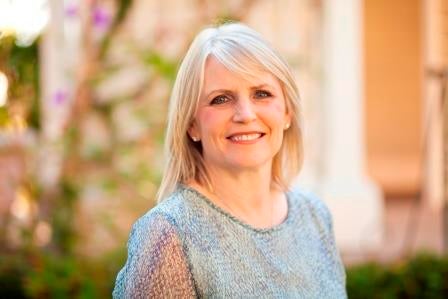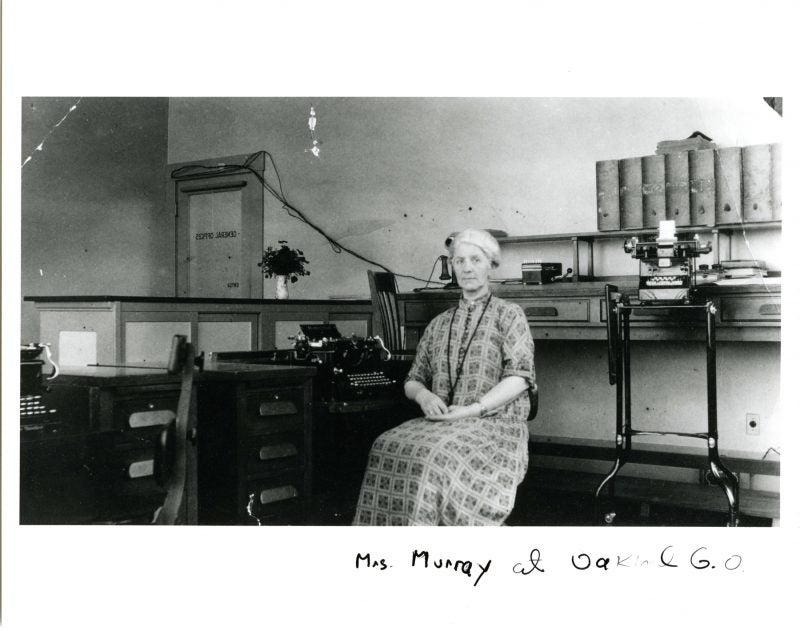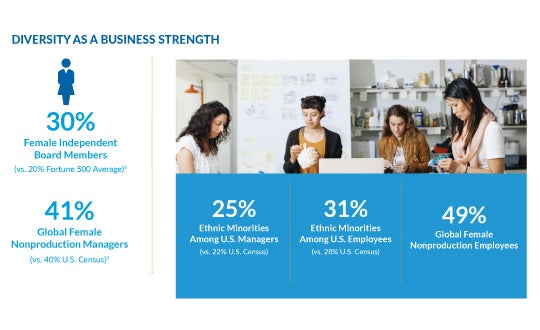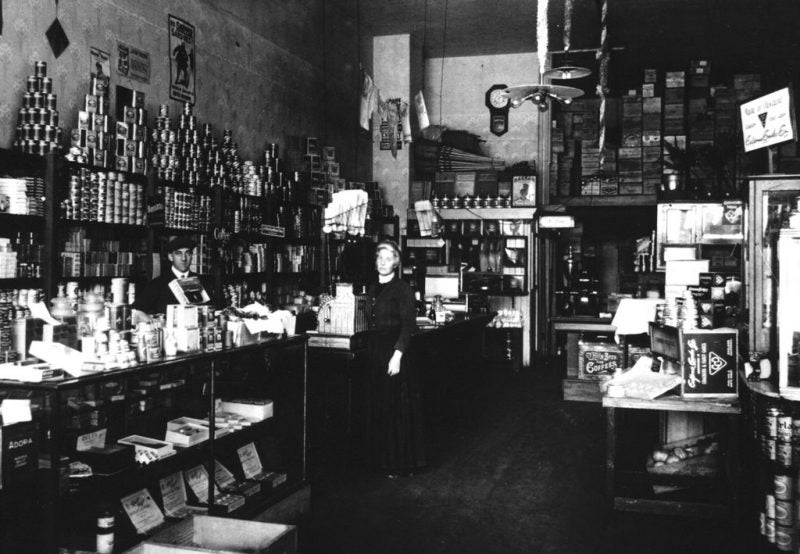Lifting Up Women at Work
By Laura Stein, EVP – General Counsel & Corporate Affairs

Laura Stein
As we celebrate International Women’s Day, I want to reflect on a topic that’s long been a priority for me: ensuring a level playing field for women.
I grew up in a family as one of three girls. I was very lucky and privileged, as were my sisters, to have parents who wanted their daughters to have every opportunity, with education being the highest priority.
In college and law school, I received a great education and had a fantastic experience, but I was definitely in the minority. In both my schools, women made up less than one-third of the student body, and my college had only recently gone co-ed. Having my mom, sisters and girlfriends as role models helped create connections and avoid the sense of social isolation that can happen when numbers are out of whack. I found that the ability to share experiences and lift each other up made a significant difference.
Some of my early experiences really shaped my perspective and encouraged me to get involved in initiatives to ensure equal opportunities for all.
Since its founding, women have had key roles at Clorox
As someone who’s worked at Clorox for over 20 years now, I’ve been given amazing opportunities to develop. I’ve seen this as well with so many other terrific women at Clorox. Maybe some of it has to do with our history.
One of the people who helped the company survive after its founding in 1913 and built our brand was a woman named Annie Murray. She had the idea of taking Clorox bleach from solely commercial use to retail use. Annie was a brilliant marketer who gave away samples in her grocery store to build interest. Even though we clearly had terrific founders and early leaders who were men, Annie Murray was truly an amazing leader. Without her vision, Clorox might not exist these 100-plus years later.

Annie Murray in the Oakland general offices, 1930s
Over the years, Clorox has always tried to create opportunities to allow both women and men to thrive. In the company’s early days, when many women didn’t work outside the home, Clorox had three women managers leading key functions. And well into the 1950s, women in corporate America often were expected to stop working after they had children. That was not the case at Clorox. We were known as a company where women could have long, prosperous careers.
Lifting up women and girls makes our company and communities stronger
Our culture and values from our early days continue to be reflected in Clorox today.
When you look at our leadership, women remain in key roles. Five of our executive committee members and four of our board members are women. It serves us well to have women in these positions because women make the majority of the purchasing decisions for almost all of the products we sell. Also, when you have both women and men working together on diverse and inclusive teams, it leads to progress and great results.

The Clorox Company diversity scorecard for fiscal year 2016
I’m really proud of the work being done throughout our company to advance gender equality. Our women’s employee resource group, SHOW (Support Heart and Opportunity for Women), is a voice for women’s issues. Helping women find their voice, focus on leadership from a woman’s perspective, build on existing development programs to enhance capabilities and skills, and create a network throughout the company — these are just a few of the things that SHOW has done to help make Clorox a welcoming place with opportunity for all.
Through SHOW, Clorox women across the globe have done so much to help improve the lives of at-risk women and girls. Within our R&D, Product Supply and IT functions, we’ve done a lot to support women and girls in STEM (science, technology, engineering and math). And I’m incredibly proud of the wonderful pro bono work by Clorox lawyers and other volunteers to support survivors of domestic violence, which affects one in three women and cuts across all socioeconomic boundaries.
In all our work, we try to ensure that we are a fair and equitable workplace and that we do what we can to make our communities better, including lifting up women and girls.
By collaborating, businesses can enable more women to thrive
Businesses can work together to share best practices, talk about what’s working, share what’s getting in the way and problem-solve against those roadblocks. I do think it’s important for companies to come together and try to make a difference collectively.
An important opportunity area we’re addressing together is the issue of diversity and inclusion in the legal profession, where for decades about half of new lawyers in the U.S. have been women but less than 25 percent of law firm partners and general counsels are women.
Currently, I am the chair of the Leadership Council on Legal Diversity (LCLD) where general counsels of leading companies in this country, together with managing partners of leading law firms, are working together to try to change the face of the legal profession. By producing tangible results in the lives of talented individuals, we work to promote inclusiveness in our institutions, our circles of influence, and our society, with the ultimate goal of building a more open and diverse legal profession. The general counsels from Wal-Mart and P&G serve on the LCLD board with me — it’s great when we partner with customers as well as competitors to create stronger relationships and try to do good together.
One thing I’ve learned is that we’ve got to collaborate to create opportunities for women in the pipeline to inspire and nurture their talent. Mentoring women to develop as strong leaders is also key. That’s what’s going to keep enabling women, and everyone, to thrive — but we need to do it together.
Being bold for change to eliminate the barriers that remain so we can all do more
I love that I share a birthday with Elizabeth Cady Stanton. Her lifelong efforts with other passionate women and men eventually led to the passage of the 19th amendment to the U.S. Constitution in 1920, finally giving all U.S. citizens, regardless of gender, the right to vote. Two hundred and two years after her birth, as we celebrate International Women’s Day in 2017, I’d like to acknowledge her pioneering work to advance women’s rights and commit to building on it.
The numbers show that although there’s been progress in certain areas, we as a society continue to face obstacles. Women still are not represented in business as they are in our community in general, especially in certain leadership roles — in board seats, as CEOs and as other senior leaders. Just as we need more women business leader role models, we need to focus on creating work environments where women and men have opportunities to thrive. We need to work together to eliminate barriers such as inadequate support systems and implicit bias (and even well-intentioned but unhelpful benevolent bias).
This year’s theme for International Women’s Day, “Be Bold for Change,” inspires us to take the next steps and address some of these remaining challenges.
Each of us can take at least one additional action in the near term to help in the effort of lifting up women and others in the workplace.
In my professional and personal life, I’ve been privileged to witness the collective power of women and men to drive positive change and make a difference in our communities and in our workplace. By being bold together, we can all do more.

William Murray and wife Annie in their Oakland, CA grocery




